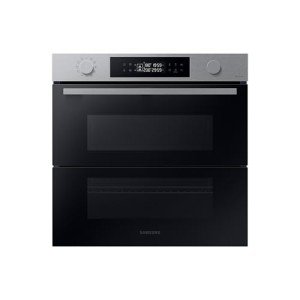The Rise of Built-In Ovens: A Seamless Approach to Modern Cooking
In contemporary kitchens, where design aesthetic appeals mix effortlessly with performance, one device stands apart as a real game changer: the built-in oven. As integrated ovens and hobs and chefs alike continue to look for ingenious services that enhance their cooking experience, built-in ovens have become increasingly popular. This post checks out the benefits, considerations, and patterns surrounding built-in ovens, highlighting why they are a vital function in contemporary cooking areas.
What is builtin ovens -In Oven?
A built-in oven is a kitchen device created to be integrated into the cabinets of a kitchen area instead of standing alone. Unlike standard freestanding ovens, which can be moved and positioned anywhere, built-in ovens been available in different styles and sizes to fit specifically within designated areas. Readily available in single or double setups, these ovens offer a structured appearance that complements modern-day kitchen area styles.
Benefits of Built-In Ovens
1. Space-Saving Design
One of the most appealing benefits of built-in ovens is their space-saving style. By integrating the oven into cabinets, you can maximize important counter and floor area. This is particularly advantageous in smaller sized kitchens, where making the most of space is important. Built-in ovens can be installed at eye level, making them more available and reducing the need to flex down.
2. Visual Appeal
Built-in ovens contribute to a streamlined and cohesive kitchen style. Readily available in various surfaces-- such as stainless steel, black, white, and custom cabinetry-- they can blend flawlessly into the overall decoration. This aesthetic appeal improves the kitchen's visual consistency and raises the area, producing a modern-day and advanced atmosphere.

3. Enhanced Functionality
Many built-in ovens come geared up with innovative cooking innovations, such as convection cooking, steam ovens, and smart functions. These improvements enable versatile cooking options, making it simpler to accomplish professional-level outcomes in your home. Smart built-in ovens can even connect to Wi-Fi, allowing users to control the oven remotely, get notices, and gain access to a variety of cooking programs and dishes.
4. Improved Ventilation
Due to the fact that built-in ovens can be integrated with cooking area hoods and ventilation systems, they can help preserve much better air quality and reduce cooking odors. This is specifically significant for those who love to cook with aromatic spices and active ingredients, as an efficient ventilation system can keep the kitchen comfy and inviting.
5. Modification Options
Built-in ovens use a wide range of customization options to suit specific cooking styles and requirements. From professional-grade appliances with numerous cooking modes to compact designs for smaller kitchen areas, homeowners can select the oven that fits their specific requirements. Many manufacturers likewise offer adjustable front panels, allowing you to match the oven's look to your kitchen cabinetry for a genuinely combined appearance.
Considerations When Choosing a Built-In Oven
While built-in ovens have lots of benefits, there are very important factors to consider to keep in mind before making a purchase:
1. Price
Built-in ovens usually include a higher rate tag than their freestanding counterparts due to their design and setup requirements. It's important to factor in both the cost of the oven and any additional costs connected to kitchen cabinetry adjustments or setup.
2. Setup Requirements
Installing a built-in oven typically needs expert help, especially if you need to customize existing kitchen cabinetry. Guarantee that you consider any costs associated with setup, consisting of labor and possible cabinetry adjustments.
3. Size and Dimensions
Before purchasing a built-in oven, measure the designated area properly to guarantee a correct fit. Built-in ovens been available in numerous sizes and configurations, so picking one that lines up with your requirements and cooking area style is vital.
4. Lifestyle and Usage
Consider your cooking practices and requires when choosing a built-in oven. If you regularly host large gatherings, a double oven might be more beneficial. On the other hand, if you have a compact kitchen area, a single-wall oven might be adequate.
Patterns in Built-In Ovens
The cooking area appliance market is continuously evolving, and built-in ovens are not exempt from emerging patterns. Some current trends include:
Smart Technology Integration: With the increase of smart home innovation, built-in ovens now frequently feature connection options. This permits users to keep track of cooking progress and adjust settings via mobile apps.
Energy Efficiency: As sustainability ends up being a concern, lots of manufacturers are purchasing energy-efficient built-in ovens that lower energy usage while maintaining efficiency.
Multi-functional Designs: Built-in ovens now provide functions such as air frying, sluggish cooking, and steaming, supplying versatility that fulfills a vast array of cooking methods.
Conclusion
Built-in ovens unquestionably represent an ideal mix of style, function, and benefit in today's cooking areas. As more house owners go with this modern option, the focus moves to producing a cooking area that is as aesthetically pleasing as it is useful. Whether builtin ovens are building a brand-new home or redesigning your cooking area, considering a built-in oven could raise your cooking experience and transform your cooking area into an elegant and practical sanctuary. With a variety of options available and continuous innovations in technology, built-in ovens remain a standout option for both beginner cooks and cooking enthusiasts alike.
